I enjoy leading photography groups to great dive destinations in Australia and overseas. These trips are wonderful to help people improve their photography skills. But when it comes to a great white photo trip to the Neptune Islands off South Australia you can never guarantee good photos or even any photos at all!
I have travelled to Port Lincoln four times over the last thirty years to photograph great white sharks. The photographic challenges on these trips are immense and always keep you on your toes, and often leave you wanting more, or in some cases anything.
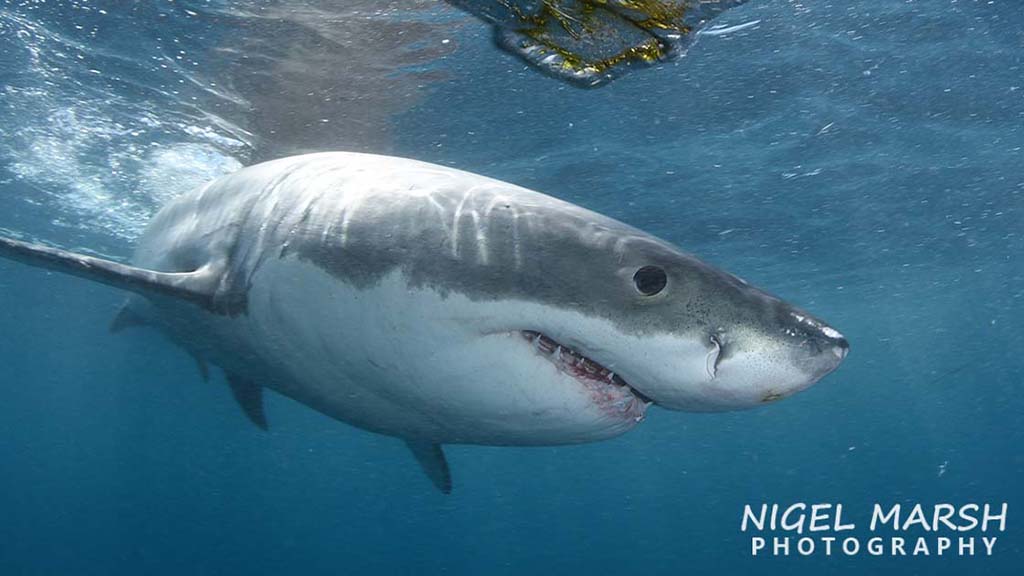
On my first trip we had perfect weather, but no sharks, even after four days of throwing smelly burley off the back of the boat. And while I have seen sharks on subsequent trips, I have never got what I considered to be a great ‘great white’ photo, as the sharks in the past were either shy, staying clear of the cage, or obscured by masses of silver trevally!
So, leading a fresh group of budding photographers on my fourth trip in November 2022, I knew I couldn’t do any worse than my previous photography attempts – things could only get better, I hoped. For this trip I booked our group on a three-day voyage with Rodney Fox Shark Expeditions, heading out to the Neptune Islands on their comfortable vessel MV Rodney Fox.
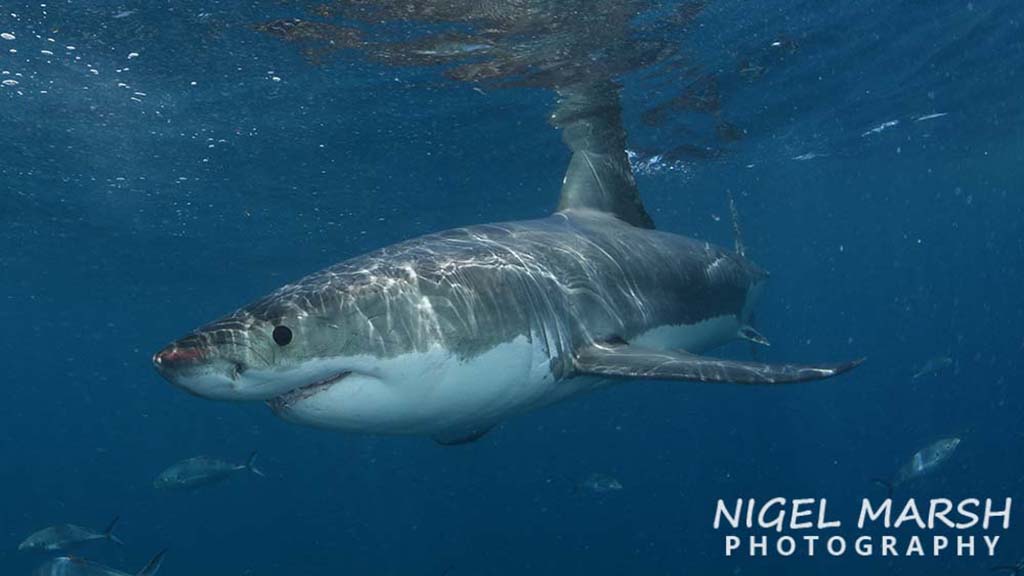
Boarding the boat at 7pm, we met the crew, sorted paperwork, and sat through the safety briefs before getting underway. It was only a three-hour run to Thistle Island, where we sheltered for the night. Early the next morning we pushed through a 3m rolling swell, fortunately with no wind, to journey another three hours to the Neptune Islands.
Once anchored, the surface cage was deployed and the chum started. Then the wait for the sharks began – which can take hours or days. But only five minutes later we had the first shark. And within thirty minutes there were four large sharks swimming around the boat.
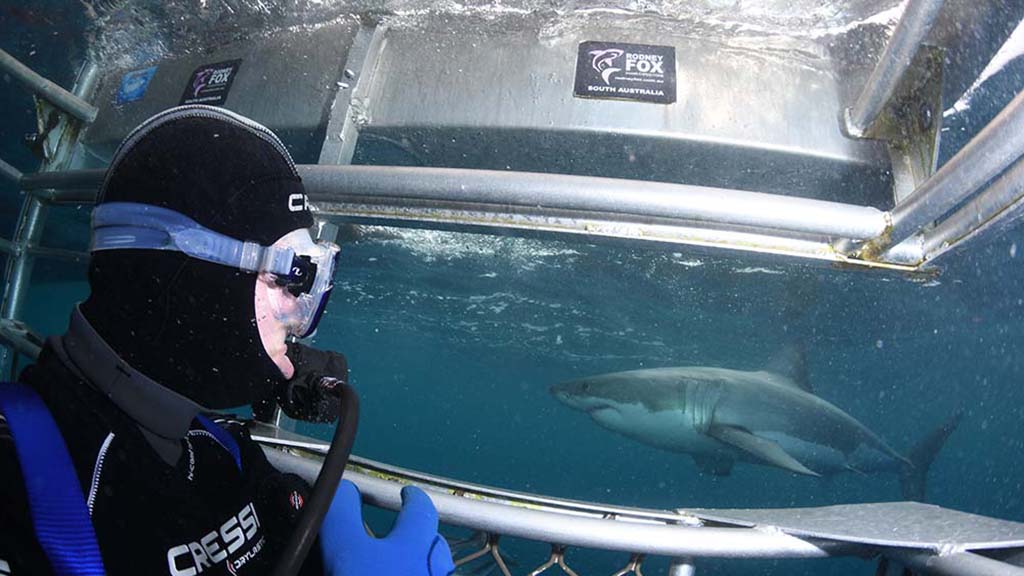
The only problem I could see for photography was the bouncing surface cage from the ground swell rolling into the bay at North Neptune Island. There were also a few silver trevally about, but fortunately not the numbers that I had experienced last time.
The best photography advice I could give to everyone was video is easier when the cage is bouncing around, as holding a camera steady between the cage bars for still images is a nightmare at times. Fortunately, the group took my advice and got some great footage. However, as I only shoot stills, I didn’t follow my own advice.
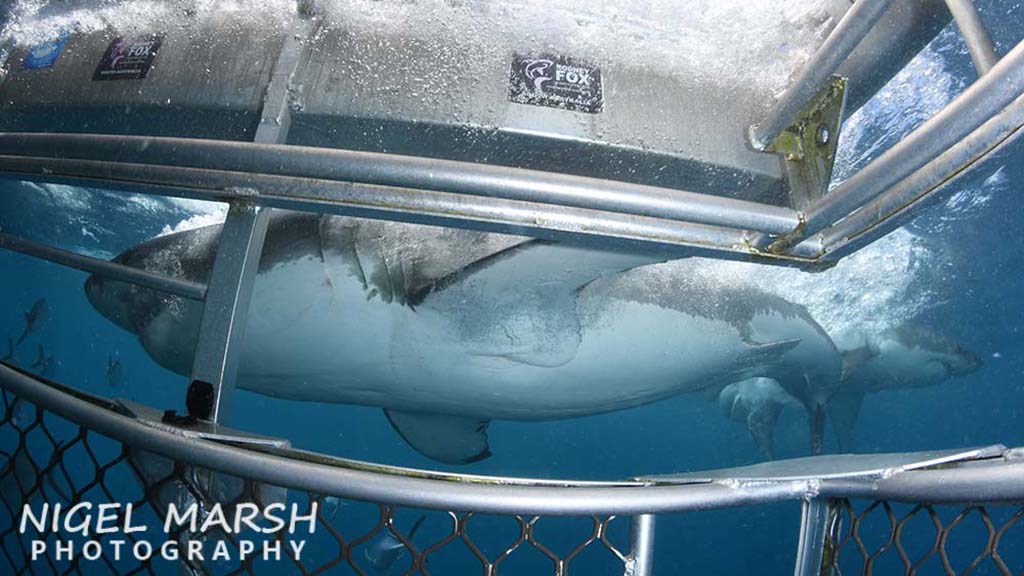
The action from the surface cage was incredible, the best I have seen, and at times I could see four sharks swimming around in the 12m visibility. And the sharks were coming very close, checking out the cage, and its occupants, every few minutes. But still photography was hard work. Holding the camera steady in the gap between the bars was very difficult, and I couldn’t look through the viewfinder to frame images, so just randomly clicked away as the sharks swam pass.
The final photographic complication was the masses of silver trevally, they may not have been as numerous as my last trip, but they were still bad, getting in the way of the camera on numerous occasions. These fish were lucky the Neptune Islands are a marine sanctuary!
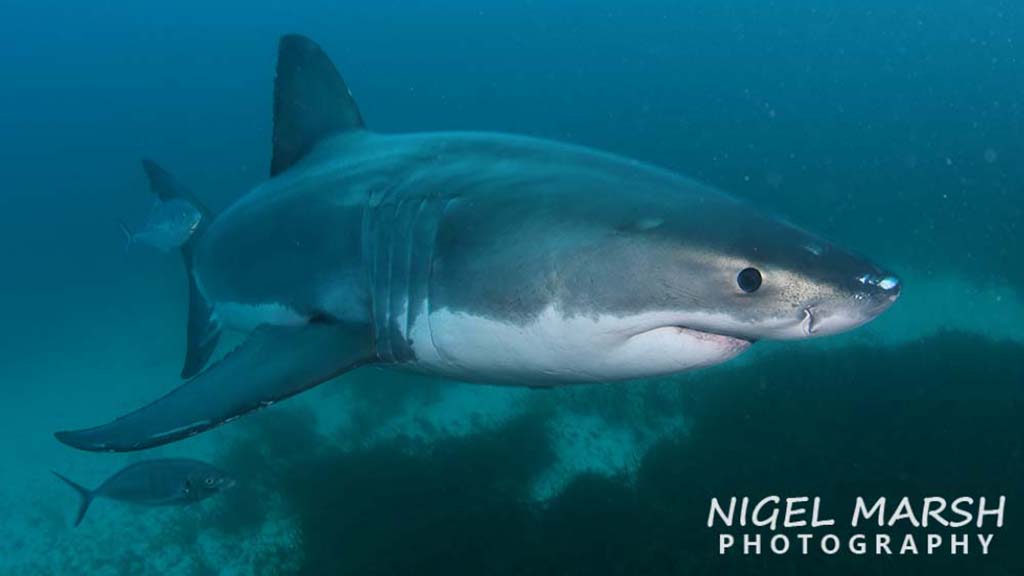
But even with these challenges I still got my best great white images yet. The bouncy conditions also meant the crew couldn’t deploy the ocean floor cage on the first day, but fortunately the swell dropped over night so we could use this special cage on the second day.
Photography from the ocean floor cage is so much easier, except when the silver trevally swarm. And watching the sharks cruise across the bottom and circle overhead is simply breathtaking.
Over our two days we had six sharks each day. Three very feisty females were our favourites. They were all around 3.2m long and we nicknamed them Rudolf, Cat Lady and Tag Girl. We also saw some larger males, but the biggest shark we saw was the 4.5m long giant Scarface. He was an impressive sight, but unfortunately didn’t come close to the cage.
After two spectacular days with the great white sharks, and happy at finally getting some great ‘great white’ images, we headed back to the mainland in the late afternoon so we could have the final day with the Australian sea lions, but that is another story.



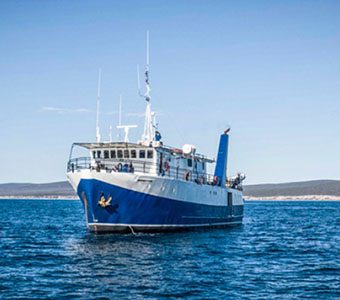
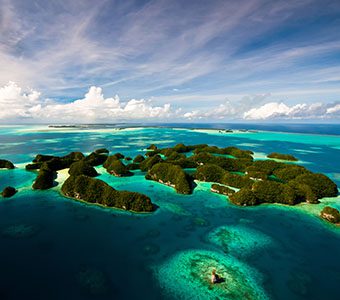
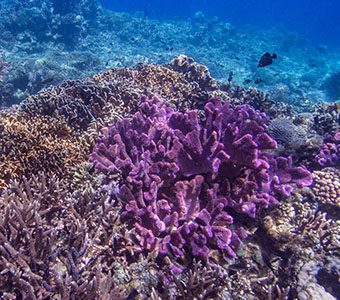

Good story, can the big camera housing stretch out the cage bar to shoot the shark,of course, no flash, thanks?
Hi Perry, I was using a 6 inch mini dome and pushing it between the bars. You are asked not to lean or hold anything outside the cage for safety. And I was using a flash for fill lighting. Cheers, Nigel